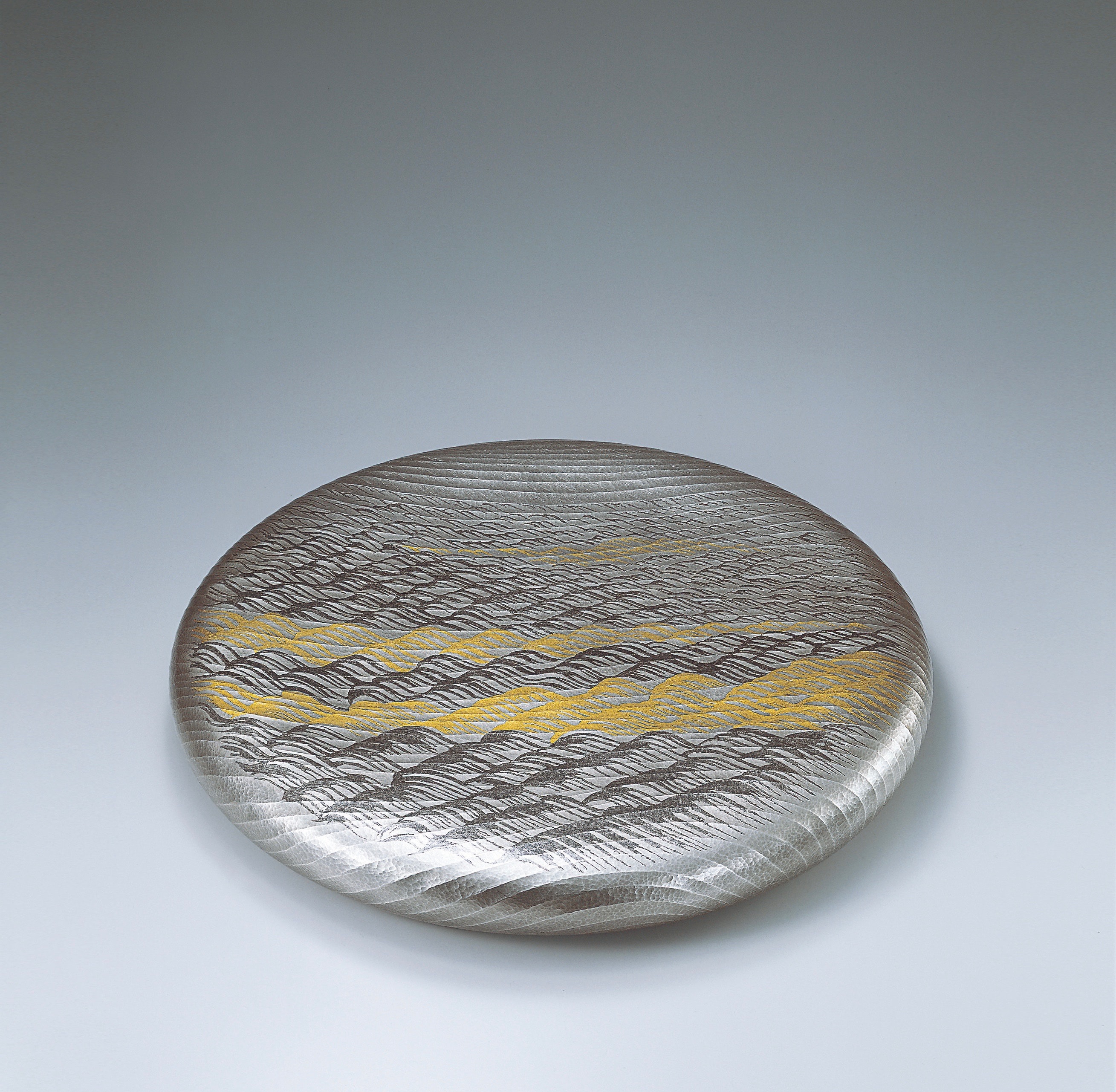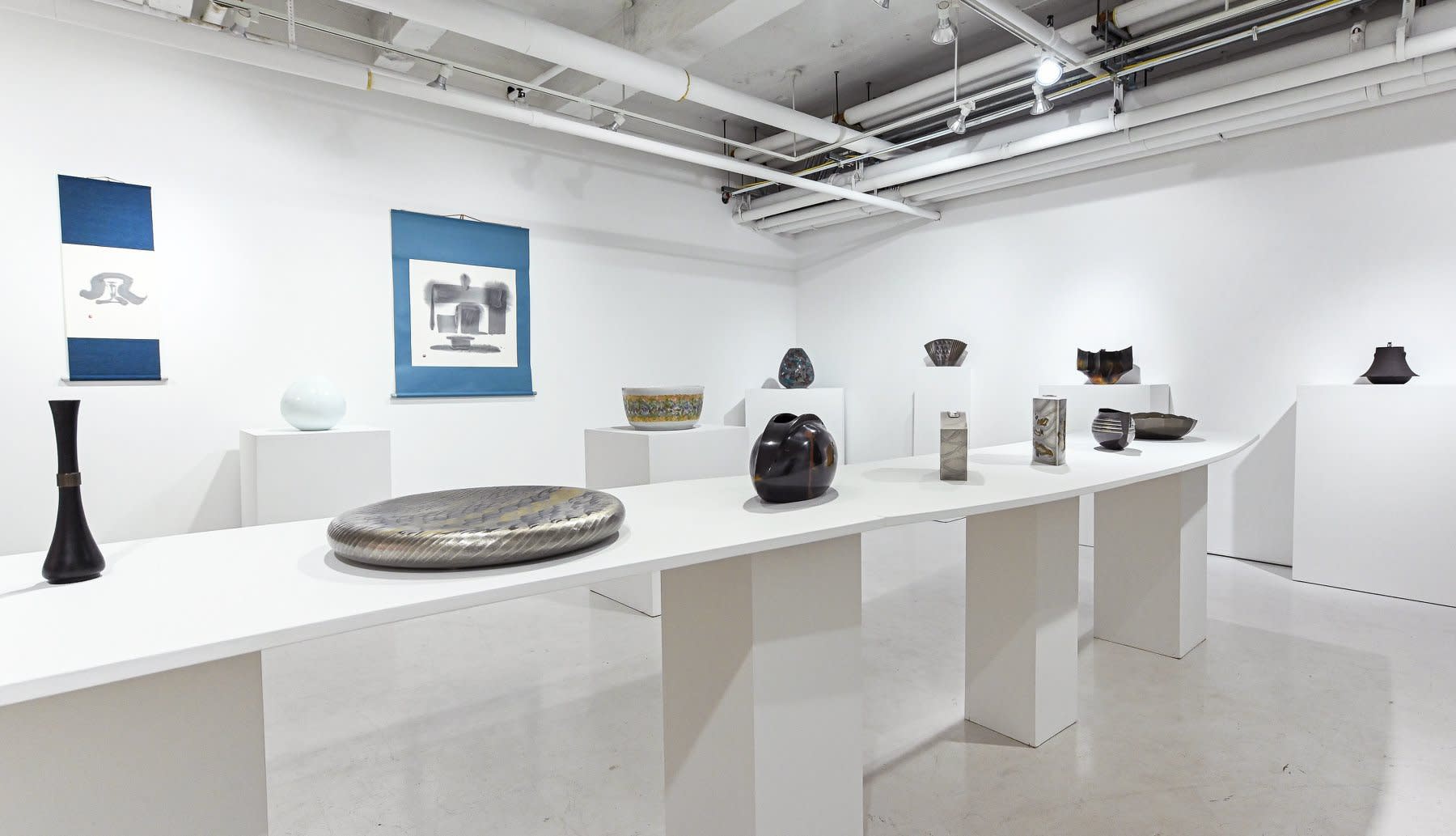-
-
In celebration of Ōsumi Yukie’s new book, “The Soul of Gold: Tales from a Japanese Metal Artist’s Studio,” this viewing room offers a glimpse into the insider world of traditional Japanese metalwork from the prespective of a Living National Treasure.
-
“Generally speaking, metal tends to be thought of as something that is hard and cold, but in reality it is soft and easily damaged. Of course, it’s true that metals can feel chilly to the touch, but they’re also marked by the way they can instantly absorb body heat and grow warm, a phenomenon not seen in other materials. When I work on a sheet of silver or copper and the metal in my hands grows warm from my own body heat, the two of us form a single entity as it starts to take the shape that I want.”
- Ōsumi Yukie
-

Silver Vase Kaikei (Seascape), 2019
-

-

Ōsumi Yukie
Silver Plate Bogetsu (Full Moon), 1994The largest and heaviest piece that Ōsumi has made to date, the artist worked to counter the abrupt and sharp rims of metalware, and decided to “hide it all together” in Full Moon.
-
 "Full Moon" on display at Onishi Gallery's exhibition, 'Earth, Air, Fire and Water: the Four Elements in Japanese Arts.'
"Full Moon" on display at Onishi Gallery's exhibition, 'Earth, Air, Fire and Water: the Four Elements in Japanese Arts.' -
“Compared to organic materials, metal possesses an unmatched combination of hardness and durability, qualities I find attractive for the way they stand in diametric opposition to the well-known Japanese aesthetic of ephemerality and transience.”
- Ōsumi Yukie -
Learn more about Ōsumi yukie
Ōsumi Yukie: The Soul of Gold
Past viewing_room









